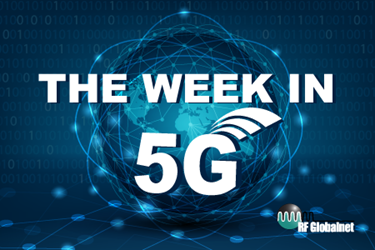The Week in 5G: 10/21/21 — Fiber Optics Industry Fears Labor & Materials Shortage, Ericsson Loses Footing in China

By Abby Proch, former editor

Let’s face it: Labor and materials shortages are a very real part of everyday life as of late. We feel it at the grocery store, we see it in public transportation. And in the world of electronics, we see it with the semiconductor shortage.
What’s troubling is that this pandemic-driven hiccup is coinciding with the ramping up of 5G network installations around the globe. And according to The Hill, the U.S. fiber optic cable industry — the ones providing the infrastructure for 5G deployment — is facing a worker and materials shortage as it encounters a run rate that’s four to six times the norm. That’s according to Fiber Broadband Association President and CEO Gary Bolton. Bolton also told The Hill that the industry can only support a growth rate of about 15 to 20 percent a year. To help lessen the burden of having a depleted workforce, FBA is launching a fiber optic technician certification program to enlist and educate workers from across the country to support the burgeoning sector.
Yet despite the seeming struggle to build infrastructure on pace, big players within the market are recording milestone upon milestone in 5G rollouts. In Slovenia, T-2 is calling up Nokia to be its sole provider over the next five years, according to a Nokia press release. The Finnish telecom will upgrade the service provider’s existing Single RAN radio and introduce 5G new radio (NR) services. As expected, the move is expected to provide “ultra-fast, low-latency, and high-capacity” connectivity for businesses and consumers.
Still in the lab, Verizon, Samsung Electronics and Qualcomm Technologies together reached upload speeds of 711 Mbps. In the trial, the team used aggregated bands of mmWave spectrum to outpace previous multi-gigabit upload speeds. It was considered a first for upload speeds, though download speeds had previously surpassed that threshold by reaching 1 Gbps.
Back to Nokia news — and this time regarding product — the worldwide supplier has broadened its industrial portfolio of products to include ruggedized devices for connectivity in harsh and demanding environments. A 5G SA smart phone (that can withstand temperatures down to -22 C) and field router (IP67-rated for indoor and outdoor use) are just two of the offerings meant to support mission-critical operations and communications in sectors such as mining, manufacturing, ports, logistics, government agencies, and public safety agencies, according to a report by International Mining.
In the U.S., Verizon’s 5G Edge with Amazon Wireless Services (AWS) outposts is now available to enterprise customers, according to a Verizon press release. Announced earlier this year, the private mobile edge compute solution is said to offer low latency and massive bandwidth to support applications is logistics, factory automation, and robotics. One of Verizon's earliest customers, Corning, uses 5G Edge to support its fiber optic cable plant operations.
And with the pervasiveness of interconnectivity comes a greater appreciation for and obligation to invest in cyber security. In Malaysia, telecoms there are joining forces to launch the first phase of a 5G cyber security test lab in Cyberjaya. According to The Edge Report, Huawei Malaysia, CyberSecurity Malaysia, and Celcom Axiata say the lab will test cases for IoT, telecommunications security, and “5G-related cyber challenges.” For its role, CyberSecurity Malaysia is acquiring 5G spectrum and 5G equipment trial usage approval from regulators, as well as providing appropriate training and preparing for phase 2.
Finally, a global push to blacklist Chinese vendors has had a deleterious impact on Swedish telecom provider Ericsson. Earlier this week, it announced plans to scale back operations in China. Ericsson's revenue in China has dropped to around 3% of its total global revenue — down from the steady 10-11% it once occupied, according to Chief Financial Officer Carl Mellander as quoted by Nasdaq.
Ericsson is blaming the losses on the Chinese reaction to Ericsson’s home country’s ban on Chinese firms Huawei and ZTE from supplying 5G components. Ericsson also nodded to a widespread materials shortages as having a role. Ericsson President Borge Eckholm says he hopes to win back trust and regain lost market share in the future.
